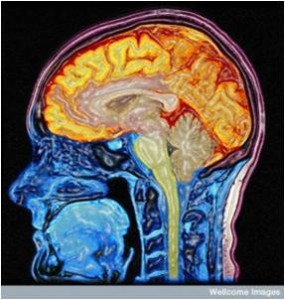 For as long as carnivals and funfairs have been around, there have been people who try to guess your age; a trick that often goes hand-in-hand with horror at the response. With our ageing population, which is most likely due to advances in medicines, treatments and our understanding of diseases, age is quite topical.
For as long as carnivals and funfairs have been around, there have been people who try to guess your age; a trick that often goes hand-in-hand with horror at the response. With our ageing population, which is most likely due to advances in medicines, treatments and our understanding of diseases, age is quite topical.
A recent study has shown that observing the anatomy of your brain may be able to uncover your true age. A set of biological markers has been shown to accurately predict the age of a young person’s brain. So, if you have ever told a white lie about your age at the cinema to get a child’s ticket, or if you ever tried to trick shop owners into thinking you were 18 so that you could be served alcohol or cigarettes then this could soon be a thing of the past!
Previous studies have tried to observe aspects of brain structure and function with the aim of identifying whether there are common patterns and timings during the development of our brains. Although many studies have been unsuccessful in trying to show this, a study carried out by Timothy Brown at the University of California combined a range of parameters regarding the structure of the brain in order to assess its age. Using 885 subjects aged between 3 and 20 years, individuals were selected from a diverse range of races, educational backgrounds and economic statuses.
Children can develop – in terms of mental capability and maturity – unpredictably, but what is not known is the extent to which these differences are based on physical features of their brain, and or are due to psychology or environment.
Magnetic resonance imaging (MRI) was performed on each of the subjects to look at the internal structure of brains, of which 231 features were studied, including certain structures, the connectivity between different regions, and thickness or volume of different areas of the brain.
 Large variations in many of the measurements were observed that corresponded to the ages of the subjects. By combining the data from each of the measurements using a complex mathematical equation, an accurate ‘snap-shot’ of how the brain appears at each age during development was formed. Although there were slight differences during development between brains of a similar age, the equation was able to correctly predict the age of a child to within a year, with an accuracy of 92%.
Large variations in many of the measurements were observed that corresponded to the ages of the subjects. By combining the data from each of the measurements using a complex mathematical equation, an accurate ‘snap-shot’ of how the brain appears at each age during development was formed. Although there were slight differences during development between brains of a similar age, the equation was able to correctly predict the age of a child to within a year, with an accuracy of 92%.
These findings indicate the presence of a developmental clock within our brain that produces a precisely timed development of brain structures throughout childhood.
Although these findings are incredibly interesting, aside from giving us insight into how our brains work you may be wondering what the relevance of these findings are. Whether we would be able to use the same technique to reliably determine the age of an adult by looking at the structure of their brain is another question. To be able to identify the true age of an individual has many advantages, but one of the most important clinical applications of this would be in observing whether a child’s brain is developing at a rate that is comparable to others of a similar age. It would also be useful in observing brain structures in individuals with autism, and other developmentally related disorders.
There are also non-clinical applications for this technique, such as cases where border staff need to be able to accurately determine the age of an individual without documents to be able to make a decision on whether to grant asylum. In the Olympic Games in Beijing in 2008, controversy arose when officials were unable to decide whether some of the competing athletes had entered the games illegally by lying about their age in order to compete.
To further this work, the study should address whether the anatomy of the brain is able to reliably predict age in subjects that have reached adulthood. If biomarkers are able to accurately predict our age even after development, then this could lead to rapid advances in the development of medicines for age and development-related illnesses.
Study: Neuroanatomical assessment of biological maturity – Timothy Brown et al. – Current Biology, September 2012.
Post by Sam Lawrence